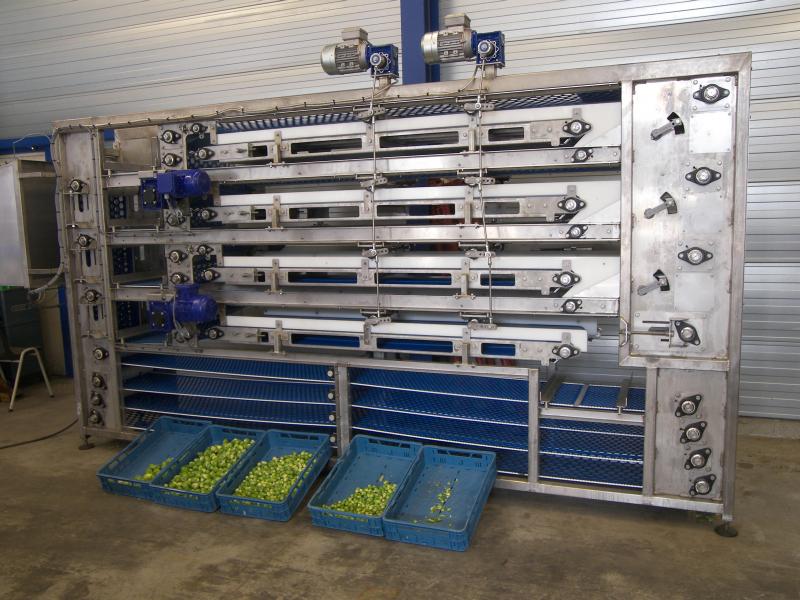Harvester for Brussels sprouts (grading stack)
One of the problems when processing Brussels sprouts is the size accuracy during the grading process. The older machines grade from small to large sprouts. Due to this there is a large chance of sprouts ending up in the wrong grade.
This is how the conventional sprout grading machine works:
- The clutter is eliminated
- The sprouts with the smallest diameter are taken out
- The sprouts with the slightly larger diameter are taken out
- The sprouts with the even larger diameter are taken out etc. etc.
The result is that the largest sprouts remain on the grading belt longest and are knocked about most.
It is more logical to first gather and take out the largest sprouts as this saves a large quantity of sprouts going through the grading machine thereby improving the processing capacity.
That is why we have turned the grading process around. Our machines grade from the largest to the smallest sprouts so that a small sprout can never end up in a larger grade.
The end-result is very uniform grading with an enormous capacity. We have a demonstration model of this machine in our factory where you can judge the grading results of your product with your own eyes.
We at GEGE-Machinebouw call this the grading stack. The grading stack is:
- Uncomplicated design
- Compact (3,5 metres long en 45 centimetres wide)
- Unlimited
- Accurate down to the millimetre
- Open and understandable
Besides this:
- The frame and blocks are made of stainless steel
- The guides that run alongside the grading and conveyor belts are made of plastic.
The operation of the grading stack
- The sprouts arrive on the upper grading belt that has holes of equal diameter.
- Sprouts with a smaller size fall through the holes and the larger ones remain.
- The larger ones are collected towards the end of the belt.
- The largest mass of product is then directly taken away.
- The sprouts that have fallen through the upper belt are collected on a solid conveyor belt
- These sprouts are moved to the input of the second grading belt ( one step lower)
- The smaller sprouts fall through the holes that are smaller than the holes in the upper belt.
- The larger sprouts remain on top and are collected and taken away. etc.
Cleaning
In order to keep the belts clean, a rinsing system may be mounted and an optional drying system that dries the sprouts by air. This can be regulated by a timer or software that could for example initiate a cleansing depending on the degree of contamination.
Round or oval
The grading stack can handle more than just Brussels sprouts. Radish, celery and flower bulbs can also be graded with this machine as long as the product is round or oval.

